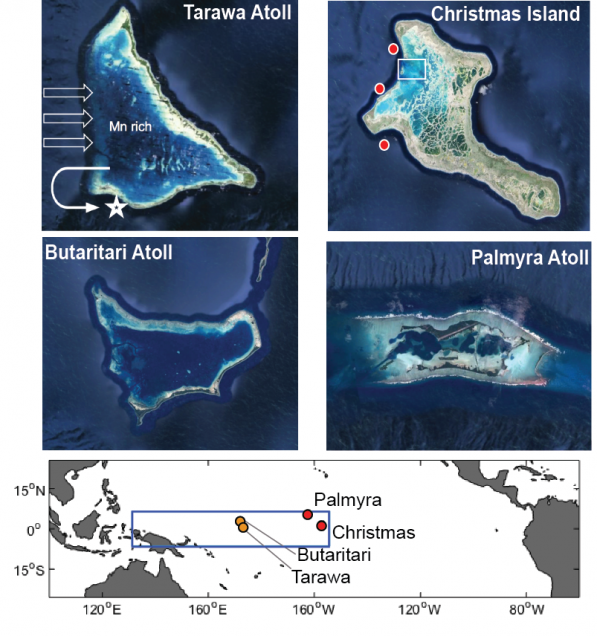Collaborative Research: Reconstructing Pacific Trade Wind Variability: Extending and Replicating a Promising New Coral Proxy
Global surface warming markedly slowed between 2000 and 2014, despite a continued increase in greenhouse gases in the atmosphere. Recent modeling and observation work suggests that this slowdown or “hiatus” in warming could be attributed to strong winds in the tropical Pacific. These strong winds mixed some of the heat into the subsurface ocean, leaving less heat to warm the atmosphere. Such decade-to-decade changes in wind strength (associated with natural variability in the Pacific) likely contributed to periods of both accelerated and reduced warming over the last 100 years. Thus, warming will likely accelerate in the coming decade(s) when the cycle reverses and trade-winds weaken once again.
However, to date, our understanding of the link between global air temperatures and tropical Pacific wind strength has been limited by the sparse historical wind observations. This work will utilize the chemical fingerprints of these wind events captured in the skeleton of living and fossil corals from the central tropical Pacific to investigate wind variability – and it’s link to global air temperatures – across the past century and preindustrial era. This project will also extend the application of this novel wind archive, providing key groundwork for such records to be extended to additional sites and time periods. These natural archives of tropical Pacific wind strength over the recent past have the potential to dramatically improve our understanding of the impact of natural wind variability on the rate of global climate change.

The primary aims of this project are to:
- Quantify the link between westerly wind bursts, seawater and porewater Mn concentration and Mn/Ca in coral skeletons at Kiritimati Atoll
- Develop a robust, quantitative Mn/Ca-wind reconstruction over the 20th century from Kiritimati, Palmyra, Butaritari, and Tarawa Atolls
- Investigate the frequency of westerly wind burst events over the LIA to preindustrial period (1400-1850CE) using fossil coral archives
Collaborators
- Dr. Jessica Carilli, SPAWAR Systems Center – Pacific
- Dr. Hussein Sayani, postdoctoral researcher, Boston University
- Dr. Kim Cobb, Georgia Tech
- Dr. Helen McGregor, University of Wollongong